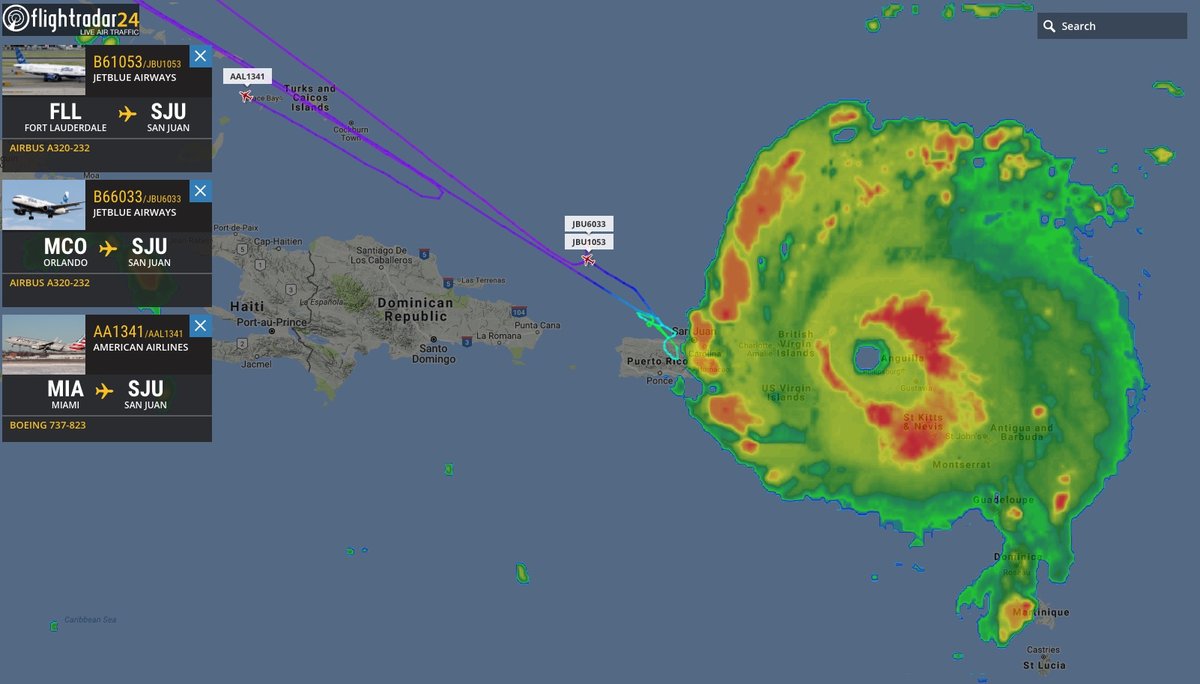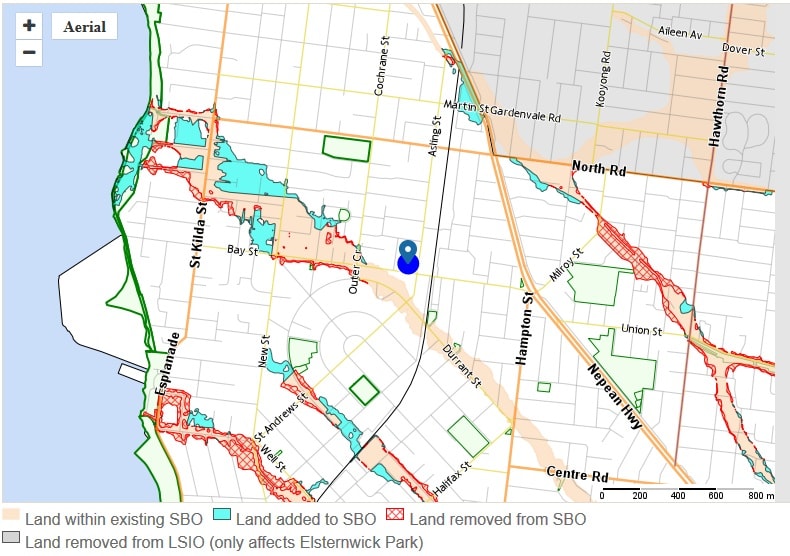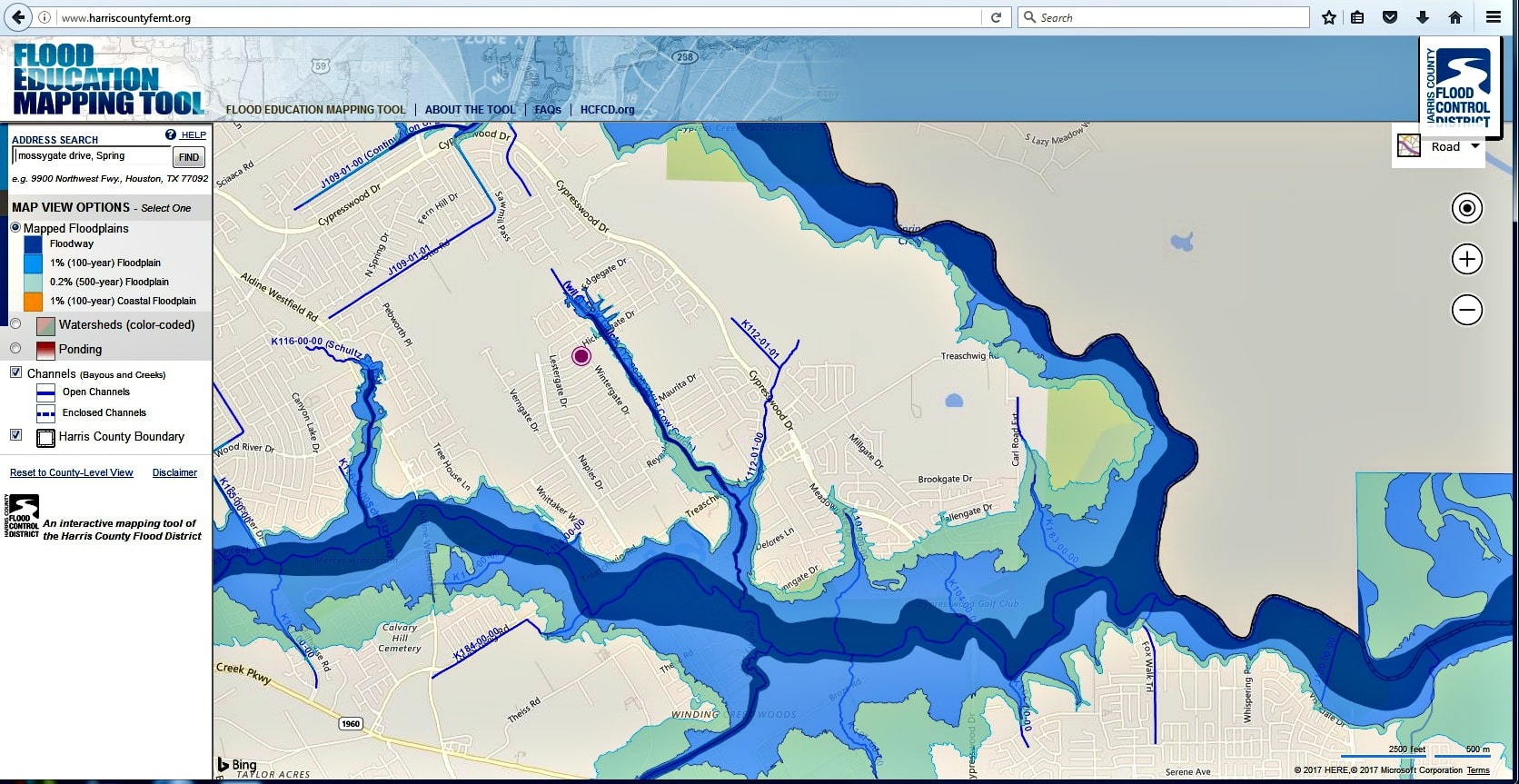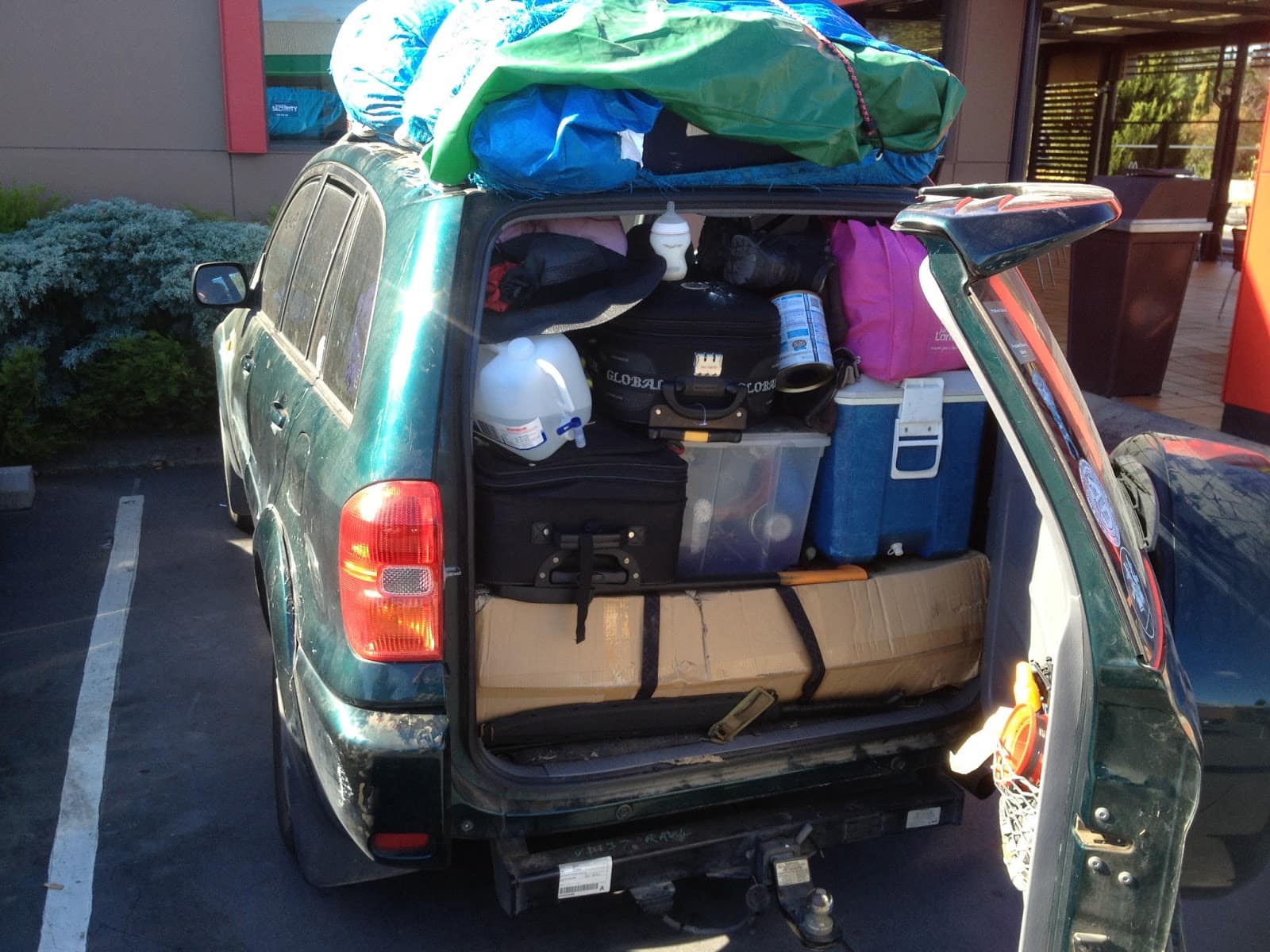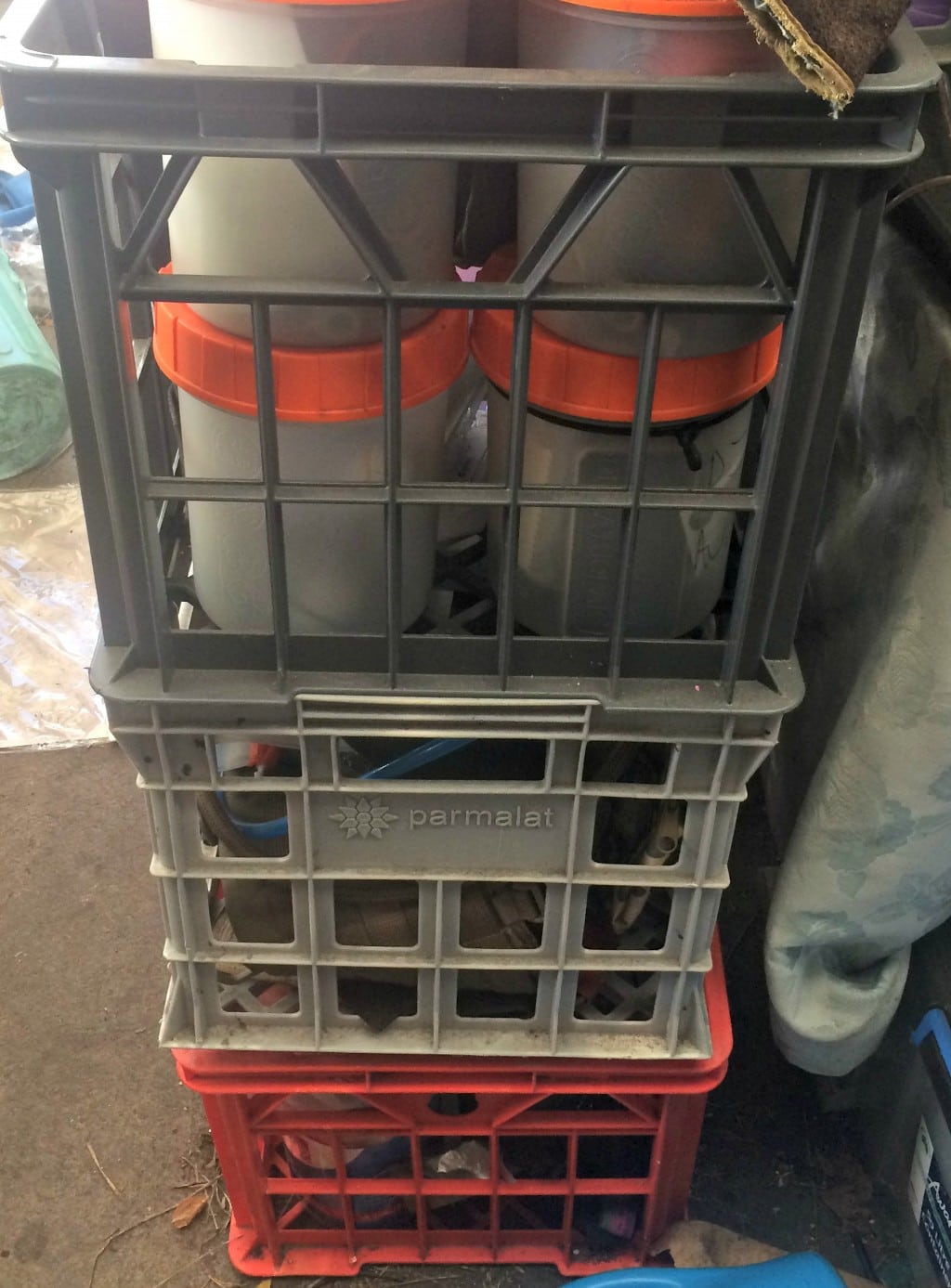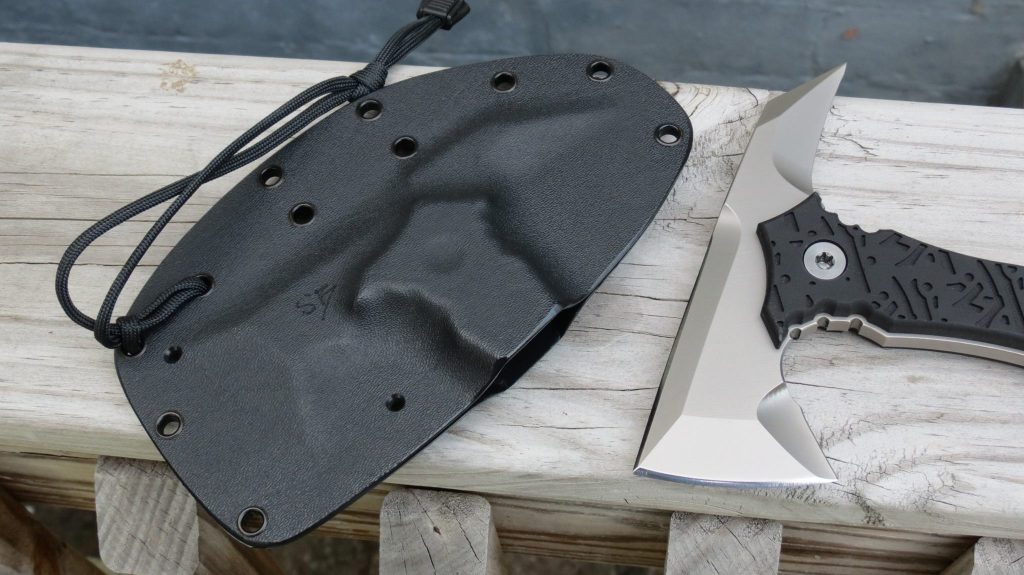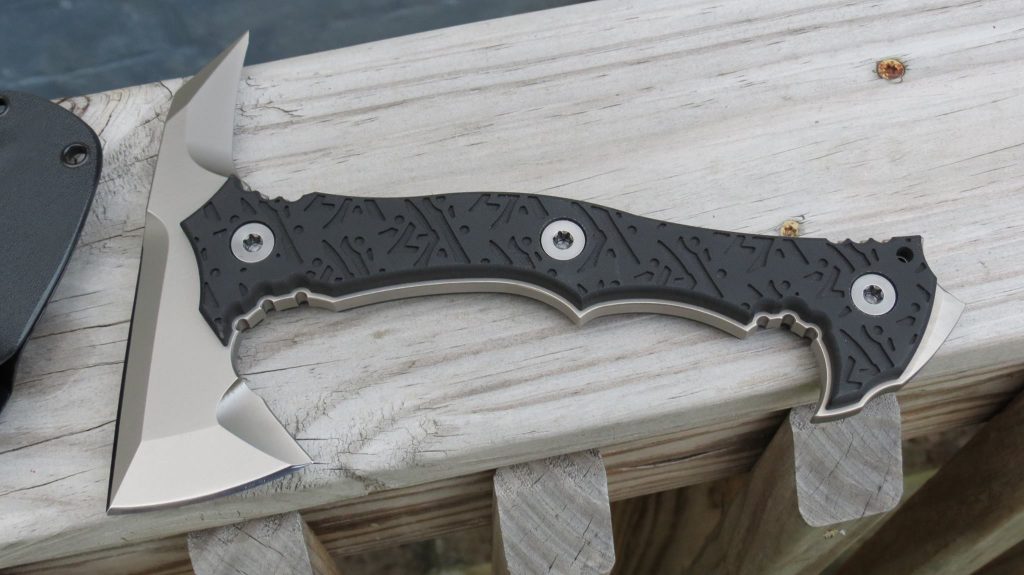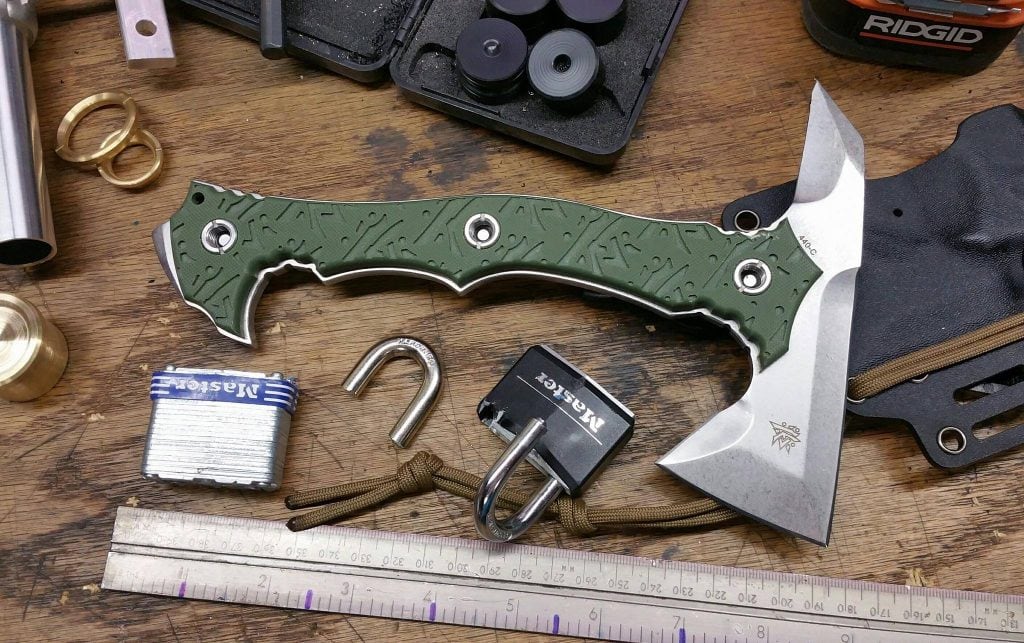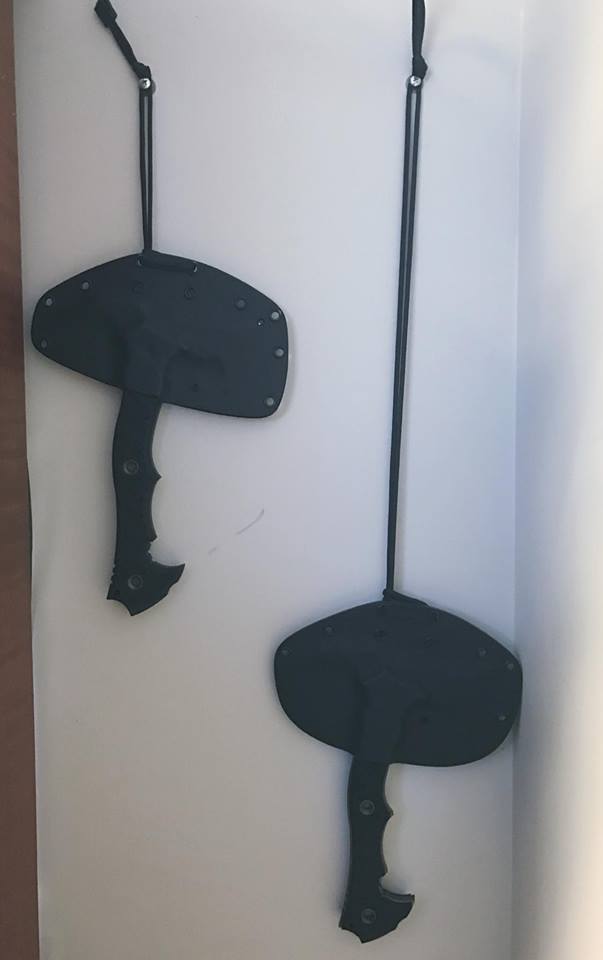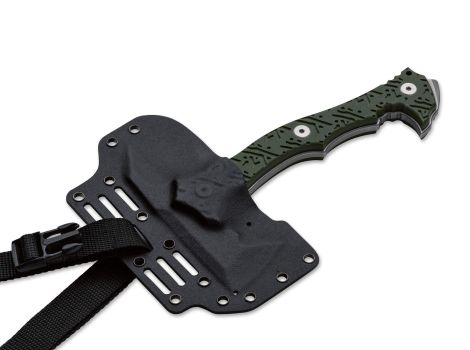
So, I haven't been posting much recently, mostly due to medical problems i've had. here's the breakdown; Health update: i'm doing really well, recovering my faculties and abilities at a good pace....
as first seen on
Breach Bang & Clear. thanks to he guys for sticking by me!
I woke around 4am on 21/11/2016, thirsty, unsurprising as I had run the Tough Mudder the day before that (my fifth time), and been out in the heat that day, and whilst I had studiously hydrated before, during and after, I had also had a rather heated hero's welcome before hitting the pillow that that evening. Choking on my bed-side water, my partner Lorin woke up, and took my bottle away. I objected somewhat incoherently. That was a warning sign. Lorin was immediately worried, and asked me to smile, and raise my hands and I didn't do too well. She called my other partner Omega in and I flubbed the "raise your hands and smile" test" for her too. They suspected I was having a stroke and called an ambulance. I was collected shortly afterwards and zipped off to the local hospital. I managed to request pants so had some Thai fisherman pants on for the simulation of dignity.
They apparently sedated me, or I passed out, because I woke up the next day (I think) to find that I had indeed had a stroke, determined by an MRI and CT scans that I had no memory of.

It turns out I had had a
middle cerebral arterial rupture, and blockage, caused by a 3cm clot (that a surgeon removed via
CT-guided Angioplasty). They did the procedure through my femoral artery, which left a bit of a hole in my thigh. The clot had caused a infarct (blockage) and subsequent rupture (dissection) of my
middle cerebral artery. This in turn lead to a frontal lobe oedema and
mild mass effect, sparing the motor cortex.
I was also put on a heavy regime of "clotbuster" drugs, and on oxygen for a day or so... It was noted that I had
left-side Hemiplagia (partial paralysis) and
dysarthria (slurred speech).

When my surgeon came to check on me I managed to give them my name and date of birth (something I was asked often) and raise hands and feet on my own which I was able to do to his amazement. It turns out that I had been very lucky in the timing of my medical attention. an hour so later and the clot-buster drugs may not have had the useful effect, and the surgery mightn't have been performed by
Mechanical thrombectomy using a MERCI Retriever L5. its a roto-rooter for blood clots!
Removal of the clot may be attempted in those where it occurs within a large blood vessel and may be an option for those who either are not eligible for or do not improve with
intravenous thrombolytics. Significant complications occur in about 7%

The clot-buster meds brought up all my post-Tough Mudder bruises something fierce. The nursing and other medical staff were all horrified by it, but believed me when I told them I wasn't an underground pit fighter or something. They also grilled me about my lifestyle, and took lots of bloods. I have a pretty good diet, my cholesterol levels are well in the green, I'm fit, strong and active. To my recollection , I sustained no head injuries on the Tough Mudder course. Stroke cause; stress and exertions.
I barely drink, have never smoked, or partake in recreational drugs. Apparently "really fit 40 year-olds" and older, overweight smokers are who they usually see. I'm apparently in the first category.
I was partially paralysed for a little while, but hardly remember that, but was frequently examined and tested wiht the 'squeeze my fingers and "lift your feet' tests as well as the more tedious "whats your name?" and "date of birth?" and "do you know where you are?", "what happened to you?" and "what day it is?" tests. Given the nature of my condition, and the unknown amount of brain damage I sustained by both the lack-of-blood to the brain, and the squeezing effect of a cerebral bleed.

They put me on a whole week of strict bed-rest. I was listed a "falls risk" and hey put a "getting up alarm" in my bed. great idea, but there was NO way I was going to get up and risk falling and smashing my brain. This meant a few things: If i moved too much in bed, a buzzer would sound, 24/7 and shortly after a Stroke Unit Nurse would how up an check that I wasn't making a run for it. They would also ask the "whats your name, where are you and what day is it?" so I generally tried to stay still. A side effect of this is that I was put on an additional
regime of intra-abdominal klexane injections

to stave off further clots from inactivity. These caused a lurid pattern of bruises on my belly! like paintball welts, without the fame, glory or fun.
Another aspect of this was that when i needed to pee, as I wasn't catheterized (thankfully) was that I needed to pee into a pee-bottle such as the one to the left modeled by Lorin. A lifetime of of "don't wet the bed or pee in your wetsuit" reflexes had to be overcome. Speaking of, I also had to learn to use a bed-pan, for pooping in, which Lorin also helped me out with, with the wiping.

Again, Dignity. It has to wait sometimes.
I had another round of CT scans, and they determined that I wasn't in much risk of further brain bleeds, and could stand some standing, so they got me up and out of bed, under some serious supervision. After proving I could stand and move from foot to foot, and balance on each foot without falling over, I was cleared to use the wheelchair to go to the bathroom on my own. I wheeled myself there, moved from chair to toilet on my own, and managed to use the facilities all on my own.

Classically,
a stroke is when poor blood flow to the brain results in cell death. There are two main types of stroke: ischemic, due to lack of blood flow, and hemorrhagic, due to bleeding. They result in part of the brain not functioning properly.[1] Signs and symptoms of a stroke may include an inability to move or feel on one side of the body, problems understanding or speaking, feeling like the world is spinning, or loss of vision to one side.[2][3] Signs and symptoms often appear soon after the stroke has occurred.
If symptoms last less than one or two hours it is known as a transient ischemic attack (TIA) or mini-stroke.[3]
A hemorrhagic stroke may also be associated with a severe headache.[3] The symptoms of a stroke can be permanent. Long-term complications may include pneumonia or loss of bladder control. I was fortunate not to acquire the headaches. I had weakness in my hands and a bit wobbly, and some slack in my face that made me slur a little, but I appeared not to have lost any of my faculties. I was cautiously walking by the third week in hospital, and able to not only go the bathroom by my self but also bathe, with the use of a shower-chair by myself, though I had very enjoyable supervision from Lorin... who also washed my hair and reminded me to scrub my pits and brush my teeth!

It was in the Second week of my stay that I was taken off 'mushy-food and thick liquids. I had been seen as a choking risk, and no-one want's aspiration pneumonia from inhaling hospital mush. The xanthan gum thickened water and juice were strange, and most people would find it off-putting, but I remembered similar drinks at
Houston Space Center, growing up. Astronaut drinks for me! I was spared too much hospital pap by my loving, supportive family, who took food orders, and snuck me in BBQ ribs, burgers and even Nando's picknic's to the formally-frowning and informally pleased nods of the nursing staff. Even though, I was ravenous. AND ate both my hospital meals AND whatever extra snacks came my way. And even on bed-rest for three weeks I infact LOST 15-20 kg. Brain injury recovery is hungry business, yo. All totally normal. Being on bed-rest also meant I was getting intra-abdominal klexane injection is my belly at lunchtime every day. Not overly painful , but bruised me and made me ache.

So, one of the most worrying parts in all of this was the question of 'just how damaged WAS my brain going to be?" Early on we determined that I had -most- of my brain function still. My fine motor skills were a touch laggy, but my memory, both short and long term seemed to be fine, as was speach, and cognition. Whilst bed-ridden, I was able and very happy to recieve and build a bunch of LEGO sets that I was brought in by Lorin and Omega at
first, and then by other people who came in, having heard I was taking visitors and building LEGO. Not only was it a blast from childhood, but also good for fine motor skills, cognition but also spatial awareness. One thing it alerted my eagle -eyed Occupational Therapists to was a thing they call "
perseveration" where when faced with a "wrong-but-close" situation such as "brick in wrong spot" I now have a tendancy to just keep doing the wrong thing, in the hope it will just come good. This same effect has made me mis-type passwords till I lock accounts too. Now I am aware of it, I can be on the look out for this behavior and apply 'if at first you don't succeed" logic to the problem. Omega and Lorin are on the watch for it so, so I don't keep bumping into wall like a broken robot for hours ...
 After the first two weeks, and a re-checking of my brain via a trip in the magic CT-donut, I was shipped of to a rehab hospital, via an amusing "patient transfer ambulance ride" in a wheelchair van. My new accommodation was not nearly as nice as my private room in the stroke ward as I was sharing a bunch of other dudes, who snored and argued with the nursing staff about their meds at all hours. I was also still getting my "obs" done every couple of hours, blood pressure, pulse and "name, DOB and where are you?" neuro checks.
After the first two weeks, and a re-checking of my brain via a trip in the magic CT-donut, I was shipped of to a rehab hospital, via an amusing "patient transfer ambulance ride" in a wheelchair van. My new accommodation was not nearly as nice as my private room in the stroke ward as I was sharing a bunch of other dudes, who snored and argued with the nursing staff about their meds at all hours. I was also still getting my "obs" done every couple of hours, blood pressure, pulse and "name, DOB and where are you?" neuro checks.
Being at the rehab hospital also meant trips to the gym, for supervised physiotherapy. This consisted of time on the elliptical machine to warm up, then a 3kg dumbell routine, and ankle weights routine. They also had me do a balance course, on parallel bars, with uneven ground underneath whilst balancing tennis balls on my hands. It turns out that having a stroke hasn't magically improved my balance any but my reflexes sem to be ok still.

The Neuro-psychology team got their hands on me, pre-dicharge and ran an extensive set of IQ tests and the like on me to see how much damage to my brain meats had been done when the clot and burst artery starved me of bloodflow. I was curious how they would assess my "before incident" ability, but apparently the tests were sophisticated enough to give a baseline. Of the seven areas being assessed: General intellectual ability, general knowledge and verbal abstract reasoning, non-verbal fluid reasoning, constructional problem solving, spatial planing and arithmetical reasoning. I had been baselined as "likely superior" in all areas "before" at the time of assessment was found to be "average" in most and falling withing the "low average range"in arithmetical reasoning.
So, it seems that at the time of assessment i've had some damage, and don't math so well. I'll be re-assessed as part of my "return to work preparation" and the hope is that in the meantime, my brain will be-self-repairing and i'll recover a lot of my "superior status" in time. I've been doing more LEGO, to build up my spatial planning and fine manual dexterity and problem solving skills sets.
In addition to neurological impairment, hemorrhagic strokes usually cause specific symptoms (for instance, subarachnoid hemorrhage classically causes a severe headache known as a thunderclap headache). I've been very lucky in that I haven't shown any evidence of ongoing headaches. It's a warning sign that we're all keeping a close eye on through.
I have a regime of facial strengthening exercises my "face-ups" to do to even out the slight lag i had developed on the left hand side of my face and a set of rehab-therapy visits with the Speech Pathology and Occupational Therapy teams.to continually re-assess my recovery. All seems to be going pretty well.

My Drivers-licence was suspended pending medical clearance and re-testing, standard procedure for people who have have strokes, which is pretty annoying, but i agree it's better for the community.
I had a steady stream of visitors throughout my stay. Friends, family, lovers, neighbors and old friends all came to see if I was OK, all-there and to cheer me up. It made a world of difference, especially with the question "will I pop a vessel and drop dead at any moment?" ringing loudly between my ears. Tactical Baby and Triceratops Girl were really pleased to see me, and not distressed, just concerned for me. I'm really grateful for all the visitors, and love I was shown, not to mention the mound of LEGO that kept hands and mind busy.

The Occupational therapists also gave me their own kind of test too, and supervised me cooking meal in the in-ward kitchen.
I did some scrounging in true Apocalypse mode style and dug out a couple of cans of beans, ketchup some onions, spices and even a bag of bacon from the back of the freezer. The OT's weren't thrilled about me sharpening all the kitchen knives, but sharpen them I did. (A sharp knife is a safe knife). and I made a pretty passable chili.
More flavour than I'd managed to ingest in a while and I didn't set myself or the kitchen ablaze, or cut anything but onions and bacon!
Now being more or less fully mobile, I was off the daily injections, which was grand, but also meant that I was put on a more pill-based regime. So, now, daily, I take this collection of pills to: regulate my blood pressure (too high = popping), thin my blood (reducing clotting), reduce cholesterol buildup (clogs for clots to plug up on) and an acid-reflux-reducer to help me with the other pills.

I was also on some anti-hiccup medication for a while too, when suck in the bed, and I had hiccups pretty bad for the first week. Didn't help me rest or sleep, but at least I didn't have any broken bones to contend with. I was also put on melatonin briefly as I had trouble sleeping in a busy room, full of snoring old dudes. The aggravated ranting at nurses doing meds and obs by my fellow inpatient didn't help much either, nor did my internal worry that I might have another stroke and not wake up.
How does this all relate to being Apocalypse Equipped?? Well, what hit home for me was that if it could happen to ME, it could happen to ANYBODY and were it not for rapid and advanced medical treatment, I'd have died or been crippled. Here's
some statistics... via WIKI
When I arrived at Hospital, I was in my pajamas, unconscious. all I had with me as far as GEAR goes were my necklaces.

That said, I have a few gems on my necklace, to keep me from feeling too naked.
Airport security LOVE ME.
What I had with me was:
Tritium marlin spike titanium WTF wrench-and-pry-tool and my
SAR moon-glow / reflective disk. And top that off with my charms:
a Mjölnir. My coyote and the
brass arrowhead I wear for luck. the rings are purely sentimental but
the brass Omega reminds me I'm owned and cherished. I did feel, in the late of the night, when nurses bumped into my bed and woke me, that I was ill prepared.
At an early point in my stay, I put in a request for my EDC, and I got a pocket dump from home, and added a few more useful items to keep handy. Included in this was some paracord, my
SAR Dead Ringer comb (because personal grooming is important). One of my
titanium Fishbone Piranhas and a
RaidOps TM-Joe made up some heft for my pocket, and a Gerber multitool added some more utility. some dental floss for good measure.

Thus equipped I rested easier, and once fully signed out, I headed home to recuperate further. I was released home into the care of Omega and Lorin, with a house-call visit from a community nurse to check up on me. We hired a shower-chair, so I could shower myself without worry of falling over.
The recovery process has been slow, and I am still wracked with fatigue, and find myself able to exert myself for only a few hours a day, before I run out of steam and have to have a nap. This is normal, I've been told, but it's been a big adjustment for me to make.

Speaking of which, I've had some others as well. On top of some physical weakness from bedrest and lack of strenuous exercise I've been free of any other serious symptoms. A medically trivial problem that has arisen and been waived off by the various medical staff I've asked as "normal, expected and will auto-correct" was my sudden sexual performance issues. No joke, and rather distressing. Put it down to near-death stress. Still, worth mentioning. Thankfully, my partners have been very understanding, and good sports about it. Apparently, even in my diminished state I am still an adequate lover, even if I have completion issues. So there's some TMI for you all. I'm improving though, and still working at it!

Medically I am A-OK, and fully biologically functional. I have my regime of "don't have another stroke medications" to keep me going, and more appointments with the Occupational Therapists, Speech Therapists and Neuro-psych team to monitor and steer my recovery.
So, to finish up this long and fairly auto-biographical piece which I'm not used to writing ... here are some useful some early recognition tips:
Early recognition was was got me he rapid medical attention that saved my life:

Various systems have been proposed to increase recognition of stroke. Different findings are able to predict the presence or absence of stroke to different degrees. Sudden-onset face weakness, arm drift (i.e., if a person, when asked to raise both arms, involuntarily lets one arm drift downward) and abnormal speech are the findings most likely to lead to the correct identification of a case of stroke increasing the likelihood by 5.5 when at least one of these is present). Similarly, when all three of these are absent, the likelihood of stroke is significantly decreased (– likelihood ratio of 0.39).[26] While these findings are not perfect for diagnosing stroke, the fact that they can be evaluated relatively rapidly and easily make them very valuable in the acute setting.
A mnemonic to remember the warning signs of stroke is FAST (facial droop, arm weakness, speech difficulty, and time to call emergency services)
And Lastly, here's some more facts and figures. Lots of people have strokes, apparently, I don't feel lonely, I feel LUCKY. I'm lucky I live in a country with excellent and affordable medical attention (my
Government recommended Private Health Insurance) covered the entirety of my $4300 9-day private room, and all medical therapies, The
Ambulance Membership covered my pick-up and transit costs.

In 2013 approximately 6.9 million people had an
ischemic stroke and 3.4 million people had a hemorrhagic stroke. In 2010 there were about 33 million people who had previously had a stroke and were still alive. Between 1990 and 2010 the number of strokes which occurred each year decreased by
approximately 10% in the developed world and increased by 10% in the developing world. In 2013, stroke was the second most frequent cause of death after coronary artery disease, accounting for
6.4 million deaths (12% of the total). About 3.3 million deaths resulted from ischemic stroke while
3.2 million deaths resulted from hemorrhagic stroke. About half of people who have had a stroke live less than one year. Overall,
two thirds of strokes occurred in those over 65 years old.
 This rather palatial tent with measures 6.4m (21') in overall length (2.1 x 2.2 x 2.1) and 3m (10') wide in the middle, 2.15m at the end rooms. The front room adds another 2.1m to the width to a total of 4.3m (14'). The side rooms are a little bit shorter than the main central room, which tops out at a very respectable 2m15m (7') tall enough for me to stand and stretch in nay room, quite a luxury. Each room has a door out wide zippering allows for good clearance around the bathtub bottom of the tent. The three off-rooms all open onto the central room with a low-trip edge of similar width as the external doors for ease of access.
This rather palatial tent with measures 6.4m (21') in overall length (2.1 x 2.2 x 2.1) and 3m (10') wide in the middle, 2.15m at the end rooms. The front room adds another 2.1m to the width to a total of 4.3m (14'). The side rooms are a little bit shorter than the main central room, which tops out at a very respectable 2m15m (7') tall enough for me to stand and stretch in nay room, quite a luxury. Each room has a door out wide zippering allows for good clearance around the bathtub bottom of the tent. The three off-rooms all open onto the central room with a low-trip edge of similar width as the external doors for ease of access. 

 Each of the off-rooms have window panels on the sides which can be rolled up to add airflow and views. Structure is provided by two sets of colour coded fiber-glass poles, and each is designed to slot into sleeves built into the inner shell, and mount on captive pegs attached to split rings, attached to the base, in the corners of the main room. These also have clip-on stays to keep the inner walls taut. The off-rooms each have a similar system, forming an arch over the external doorway. Plenty of peg-loops around the edges provides for a well pegged-down base.
Each of the off-rooms have window panels on the sides which can be rolled up to add airflow and views. Structure is provided by two sets of colour coded fiber-glass poles, and each is designed to slot into sleeves built into the inner shell, and mount on captive pegs attached to split rings, attached to the base, in the corners of the main room. These also have clip-on stays to keep the inner walls taut. The off-rooms each have a similar system, forming an arch over the external doorway. Plenty of peg-loops around the edges provides for a well pegged-down base.  Each room features clips in the corners to suspend a light or string a clothes line to air out what have you. The main room has two "window" panels in the roof and the fly has two clear PVC panels corresponding for light and ventilation. The windows throughout make for a very well lit and comfortable home away from home.
Each room features clips in the corners to suspend a light or string a clothes line to air out what have you. The main room has two "window" panels in the roof and the fly has two clear PVC panels corresponding for light and ventilation. The windows throughout make for a very well lit and comfortable home away from home.  The main room has two zippered ports in the bathtub floor wall to feed power or other cables in without exposing yourself to too many bugs and critters. Perfect if you have a powered site, a generator or the like. You might even feed an LPG hose to a cooker if in-tent cooking was your thing, though I wouldn't recommend it myself. There are also two sets of four mesh pocket sewn into the main room walls for all manner of small items; phones, sunglasses, tissues, spare socks, gloves, caps. This little touch helps organize personal effects that might otherwise vanish until pack-up time. (I once "lost" a wallet, went as far as cancelling all my cards only to find it under the tent when we packed up). The fly is silvered on the inside which adds significant protection from the sun, and radiant heat, and as previously mentioned has clear PVC panels matching the windows on the sides and top of the inner layer.
The main room has two zippered ports in the bathtub floor wall to feed power or other cables in without exposing yourself to too many bugs and critters. Perfect if you have a powered site, a generator or the like. You might even feed an LPG hose to a cooker if in-tent cooking was your thing, though I wouldn't recommend it myself. There are also two sets of four mesh pocket sewn into the main room walls for all manner of small items; phones, sunglasses, tissues, spare socks, gloves, caps. This little touch helps organize personal effects that might otherwise vanish until pack-up time. (I once "lost" a wallet, went as far as cancelling all my cards only to find it under the tent when we packed up). The fly is silvered on the inside which adds significant protection from the sun, and radiant heat, and as previously mentioned has clear PVC panels matching the windows on the sides and top of the inner layer.  The zippers are set under a lip for rain shedding and have a reflective cord loop for easy pulling at night. Numerous guy-lines are built in to strategic locations and the ground- reaching corners feature a heavy-duty shock-cord loops for pegging it down. The "front door" has a door-matt built in, perfect for keeping muddy feet out of your nice clean tent. The fly features a pop-out pavilion with two poles to form an annex that is billed as being able to join up with the back-cabin of a truck or van, for even more enclosed space, though i haven't had the ability to try that out. I have managed to set the whole thing up on my own, under good conditions, but it's easier with help. I have set the fly up the wrong way around several times, prompting me to write on the corners of the fly and tent ("tab A, slot B" type notes for next time I set it up. The tent nominally fits in a light nylon carry bag, with carry and drag straps, and a wheeled base, but I have had great trouble re-packing it every time.
The zippers are set under a lip for rain shedding and have a reflective cord loop for easy pulling at night. Numerous guy-lines are built in to strategic locations and the ground- reaching corners feature a heavy-duty shock-cord loops for pegging it down. The "front door" has a door-matt built in, perfect for keeping muddy feet out of your nice clean tent. The fly features a pop-out pavilion with two poles to form an annex that is billed as being able to join up with the back-cabin of a truck or van, for even more enclosed space, though i haven't had the ability to try that out. I have managed to set the whole thing up on my own, under good conditions, but it's easier with help. I have set the fly up the wrong way around several times, prompting me to write on the corners of the fly and tent ("tab A, slot B" type notes for next time I set it up. The tent nominally fits in a light nylon carry bag, with carry and drag straps, and a wheeled base, but I have had great trouble re-packing it every time.  After use, I like to lay the fly out to dry, ( and the inner, too,inverted if possible) if space and time allows to have it dry for pack-down. In summary this is a great tent, spacious, roomy and airy, but its very large and heavy. With all the pegs in place, and well guy-lined down, the chain-of-domes structure is very stable in even quite high winds, and in the light rains I've had it up in we've had no leakage or seepage problems. Given its capacity, it could even do as a short to medium term bug-out home, once a suitable location has been scouted, whilst more permanent habitations are established. This was a second hand gift from a festival going friend of ours, and i probably wouldn't have bought one as large on my own. Looks like its no longer on the market, but if you have the need for a big tent, something like this would suit you well.
After use, I like to lay the fly out to dry, ( and the inner, too,inverted if possible) if space and time allows to have it dry for pack-down. In summary this is a great tent, spacious, roomy and airy, but its very large and heavy. With all the pegs in place, and well guy-lined down, the chain-of-domes structure is very stable in even quite high winds, and in the light rains I've had it up in we've had no leakage or seepage problems. Given its capacity, it could even do as a short to medium term bug-out home, once a suitable location has been scouted, whilst more permanent habitations are established. This was a second hand gift from a festival going friend of ours, and i probably wouldn't have bought one as large on my own. Looks like its no longer on the market, but if you have the need for a big tent, something like this would suit you well.
